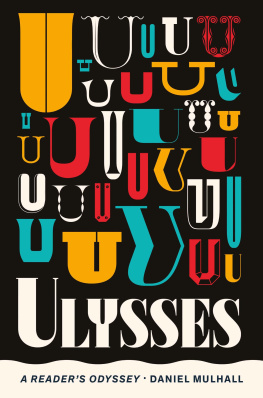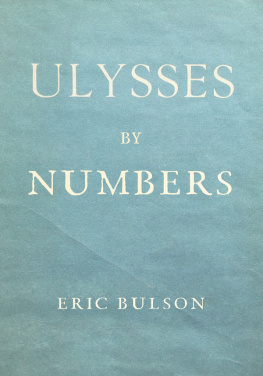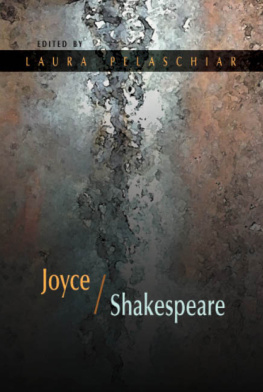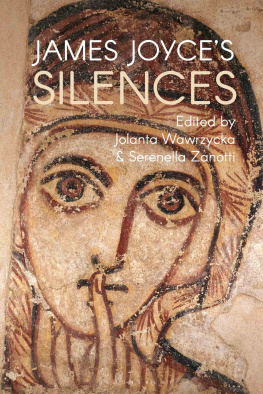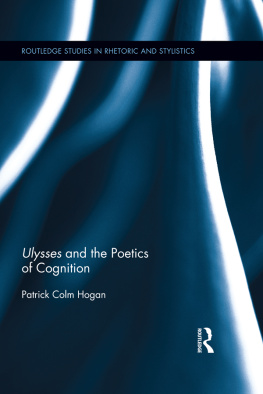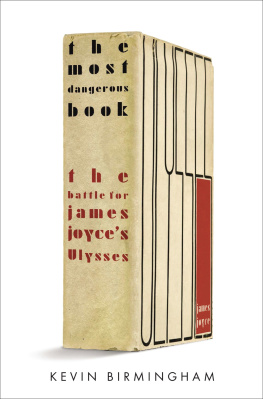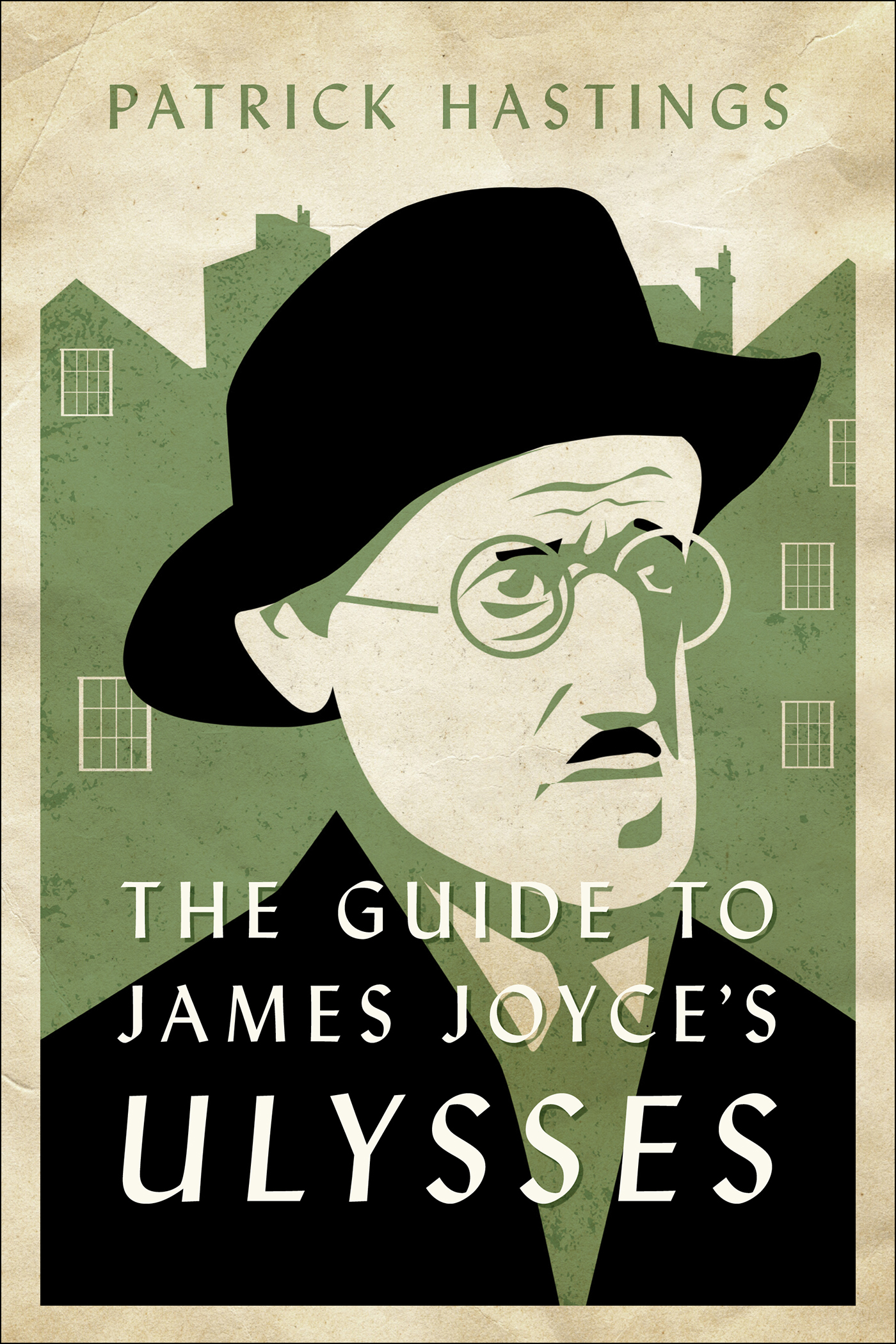Contents
Guide
The Guide to James Joyces Ulysses
THE GUIDE TO JAMES JOYCES ULYSSES
PATRICK HASTINGS

JOHNS HOPKINS UNIVERSITY PRESS
Baltimore
2022 Patrick Hastings
All rights reserved. Published 2022
Printed in the United States of America on acid-free paper
2 4 6 8 9 7 5 3 1
Johns Hopkins University Press
2715 North Charles Street
Baltimore, Maryland 21218-4363
www.press.jhu.edu
Library of Congress Cataloging-in-Publication Data
Names: Hastings, Patrick, 1982 author.
Title: The guide to James Joyces Ulysses / Patrick Hastings.
Description: Baltimore : Johns Hopkins University Press, 2022. | Includes bibliographical references and index.
Identifiers: LCCN 2021022700 | ISBN 9781421443492 (paperback) | ISBN 9781421443508 (ebook)
Subjects: LCSH: Joyce, James, 18821941. Ulysses. | Joyce, James, 18821941 Criticism and interpretation.
Classification: LCC PR6019.O9 U65436 2022 | DDC 823/.912 dc23
LC record available at https://lccn.loc.gov/2021022700
A catalog record for this book is available from the British Library.
All photographs are by the author unless otherwise credited. Maps are by Jade Myers of Matrix Art Services. Sources consulted in the preparation of the maps are The Ulysses Guide: Tours through Joyces Dublin, by Robert Nicholson; Joyces Dublin: A Walking Guide to Ulysses, by Jack McCarthy and Danis Rose; and James Joyces Dublin: A Topographical Guide to the Dublin of Ulysses, by Ian Gunn and Clive Hart.
Special discounts are available for bulk purchases of this book. For more information, please contact Special Sales at .
Something to hand on (U 6.7475)
For Pierce, Bradley, and Renwick
PREFACE
I n May of 1932, an unwieldly object arrived in the New York City Customs office, and a huffy gentleman demanded that the package be seized as contraband. The customs officer looked down at the offending item, a thick book bulging with papers taped inside its covers, and shrugged at what seemed like a mad geniuss strange assemblage of hoarded text. The book was called Ulysses, and its would-be American publisher, Random House, had intended for it to be confiscated and tried for obscenity. The book had been banned in most of the English-speaking world since 1921, only increasing the allure and value of Ulysses to its publishers, who thought that the novels place in the modern canon warranted a reweighing of its literary merit against its imagined corrupting influence. Buttressed by the scholarly praise taped into the book (and therefore taken into evidence along with the novel itself), Joyces masterpiece of modernism would soon be released from the confines of censorship, and its labyrinthine systems of style, characterization, and allusion could then be openly read and puzzled over.
If you are reading this, you are at least considering joining the throng of readers who have been baffled and enthralled by James Joyces Ulysses. Do it. Joyce stated that if Ulysses isnt fit to read, life isnt fit to live (JJ 537). Indeed, this reading experience will enrich and inform your life. But Joyce also said that the demand that I make of my reader is that he should devote his whole life to reading my works (JJ 703). I have acceded to his demand so that you dont have to, and this book is the fruit of that labor of love.
A transcendent cultural phenomenon, James Joyces Ulysses is celebrated each year on Bloomsday (June 16) in bookstores and pubs across the globe. Now in its second century, the novel remains insurgent and capable of provoking lively debates, yet it may be more famous for its intimidating density than for its emotionally resonant story. Most scholars would agree that a first reading of the novel requires some external support to navigate, appreciate, and ultimately finish the book. For example, a reader must go outside the text to discover even the Homeric chapter titles, which Joyce identified in the schema he privately disclosed to friends and early critics; had Joyce not titled the novel Ulysses, the intentional correspondences to The Odyssey may have remained more obscure than they already are. In this book, I seek to provide comprehensive, accessible, and insightful guidance as you undertake this emphatically worthwhile but unquestionably demanding reading experience.
While reading (and, ultimately, finishing) Joyces novel requires some measure of dedication, the rewards are well worth the effort. This guidebook aims to mitigate some of the challenges Ulysses poses by providing explanation and context without putting a thumb on too many interpretive scales. Ultimately, I hope to ground you securely enough in the text for you to have your own reading experience and to develop your own interpretive opinions. In this way, my book is oriented primarily toward the first-time reader of Ulysses and is by no means an exhaustive study of the novel. Yet, I hope to offer a few ideas that even devoted Joyceans might find engaging.
Most first-time readers of Ulysses will find the Episode Guides to be the chief resource of this book. Each Episode Guide focuses on one of the novels eighteen episodes, blending narrative summary, explanations of style, interpretive insight, seminal criticism, and maps of locations in Dublin. You may find it helpful to read the relevant Episode Guide prior to reading the text itself in order to prepare yourself for what happens in the plot and to provide some conceptual framework for the episodes stylistic innovations. Or, you might prefer to read the chapter in the novel first and then check the Episode Guide afterward to clear up confusing bits and to point out details you might have missed. Regardless of how you choose to use this guidebook, I recommend reading at least one episode of the novel per week. You should aim to complete each of the first eight episodes within the same day (if not in one sitting) in order to build the momentum and confidence you need to finish the book. Joyce trains you in how to read his novel, beginning with challenging but rather short chapters, gradually building your reading muscles so that you are prepared to handle Scylla and Charybdis, Oxen of the Sun, and Circe later.
In terms of the ergonomics of reading this novel, try reading actively with a pen or pencil at a table or desk. If you want to get answers to a few of the novels many what on earth? passages, get a copy of Don Giffords Ulysses Annotated and keep it open beside the novel as you read. But you neednt get bogged down in checking each of the allusions. You may find entire paragraphs and even full pages where you say, Well, theres a lot of stuff in there that I dont understand. Thats fine. Keep going. Even after studying the book carefully for nearly two decades, I still encounter many passages like that. Just accept that theres no way of grasping the entire book in one reading (or five... or fifteen); indeed, Joyce hoped that Ulysses would keep the professors busy for centuries (JJ 521). Once you finish reading the novel, youll want to read it again (if not immediately, then later in life). And no book better rewards rereading than Ulysses.
My introduction provides an overview of the novels plot, outlines its correspondences to Homers


